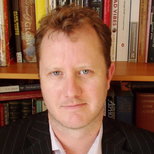Less affordable alcohol will push drinkers towards the black market
SUGGESTED

The apparent rise in illicit alcohol consumption in Britain may be an artifact of better enforcement and policing, or it may be a temporary phenomenon resulting from recession, or it may be a permanent and growing problem due to excessive taxation. Unlike the countries of Scandinavia and Eastern Europe, homemade, smuggled and counterfeit alcohol has never been a big part of the UK’s alcohol market, but this may be changing and policies such as minimum pricing are only likely to accelerate the trend.
Economists have a good understanding of the factors that fuel the shadow economy: low tax morale, high tax and social security payments, corruption, lack of faith in state institutions, inflexible labour markets and low GDP being chief amongst them. In the case of alcohol, two factors stand out: low incomes and high prices. Together, these factors dictate the affordability of alcohol and, as I show in the new IEA paper, Drinking in the Shadow Economy, affordability is a crucial determinant of the size of the illicit alcohol market.
By studying levels of unrecorded alcohol in European countries, we can see a clear relationship between affordability and counterfeit/contraband alcohol. Illicit alcohol is most common in Eastern Europe, where incomes are generally low, and in Scandinavia, where alcohol taxes are very high. This, perhaps, comes as no surprise, but one other interesting finding has emerged from this research. Contrary to popular belief, the affordability of alcohol does not appear to determine the amount of alcohol consumed in a country. Countries which have the highest alcohol taxes, such as Finlandand Ireland, have the same rates of per capita consumption as countries such as Franceand Spain, where alcohol is much more affordable. This undermines the traditional justification for increasing alcohol duty – that it will reduce alcohol consumption and therefore (according to the controversial Ledermann hypothesis) will reduce alcohol-related harm.
In truth, high alcohol prices create their own harm. Excessive alcohol consumption undoubtedly carries risks to health, but so too does hooch. Counterfeit spirits and surrogate alcohol frequently contain dangerous levels of methanol, isopropanol and other chemicals which cause toxic hepatitis, blindness and death. Alcohol smuggling and counterfeiting is linked to other illegal activities, including drug smuggling, prostitution, violence, money-laundering and – in a few instances – terrorism. These are the unintended consequences one associates with prohibition, albeit at a less intense level than was seen in America in the 1920s. Failing to deal with alcohol’s shadow economy threatens not only the public finances, but also public health and public order. Policy-makers should take the threat of illicit production seriously when considering alcohol pricing.
Christopher Snowdon is the author of Drinking in the Shadow Economy.




